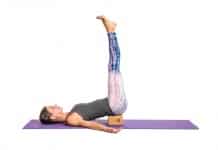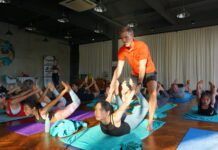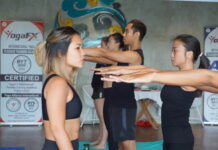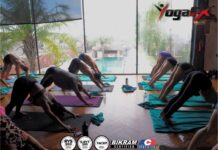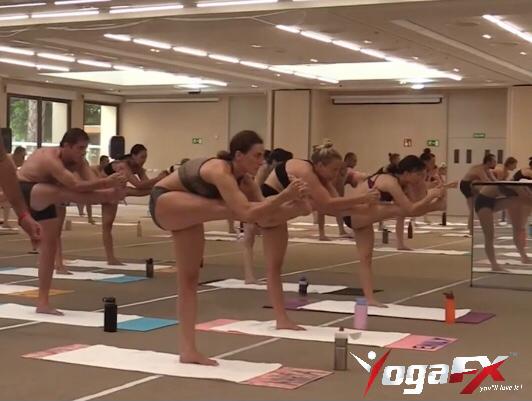
What is hot yoga? This question often arises as the practice gains popularity among yoga enthusiasts seeking an invigorating and transformative experience. yoga, also known as Bikram yoga or hot vinyasa yoga, combines the ancient practice of yoga with the added element of practicing in a heated room. In this article, we will explore the fundamentals of yoga, delve into its origins, and uncover the numerous benefits it offers for both the body and mind. Whether you’re a seasoned yogi or new to the practice, understanding what yoga entails can empower you to make informed decisions about incorporating it into your wellness journey.
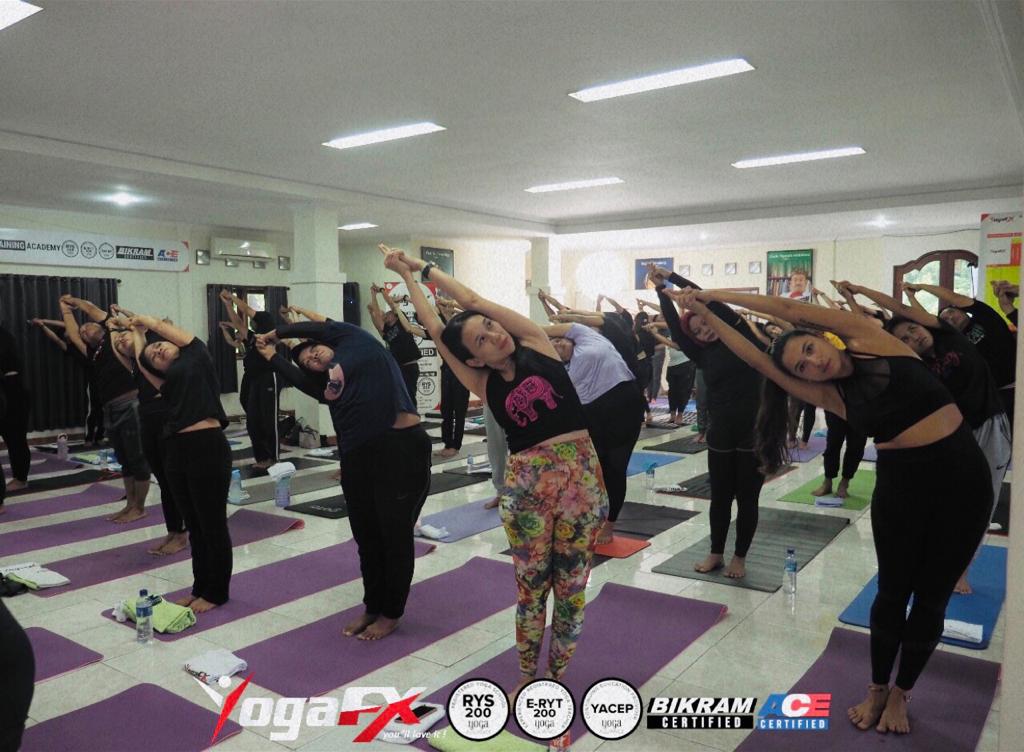
The Fundamentals of Hot Yoga
Hot yoga is a dynamic practice that takes traditional yoga asanas (poses) and combines them with the element of practicing in a heated room. The temperature is typically set between 95-105 degrees Fahrenheit (35-40 degrees Celsius), creating a challenging and sweat-inducing environment. There are various styles of yoga, including the well-known Bikram yoga, which follows a specific sequence of 26 poses and two breathing exercises, also known as 26 and 2 yoga.
The heated room in hot yoga serves multiple purposes. Firstly, the heat warms up the muscles, allowing for deeper stretches and increased flexibility. It promotes blood circulation, which aids in the removal of toxins from the body through sweating. Additionally, the warmth of the room can create a meditative and introspective environment, helping practitioners to focus their attention inward and deepen their mind-body connection.
“Respond To Your Plan Failure To Believe In Your Plan”
The Origins of Hot Yoga
Hot yoga can be traced back to Bikram Choudhury, an Indian yoga guru who developed the Bikram yoga style. In the 1970s, Choudhury introduced his unique sequence of 26 poses and two breathing exercises to the United States. The practice gained popularity, and today, Bikram yoga studios can be found worldwide.
Bikram Choudhury’s approach to hot yoga is based on the belief that the heated environment mimics the climate of his hometown in India, promoting flexibility, detoxification, and overall well-being. Choudhury’s system is designed to systematically work the entire body, from head to toe, through the specific sequence of poses and breathing exercises.
While Bikram yoga is a prominent style of hot yoga, other variations have also emerged. These variations may incorporate different sequences of poses, yet they still maintain the core element of practicing in a heated room. Some popular styles include hot vinyasa yoga, power yoga, and hot flow yoga. Each style offers its own unique blend of movement, heat, and challenge.
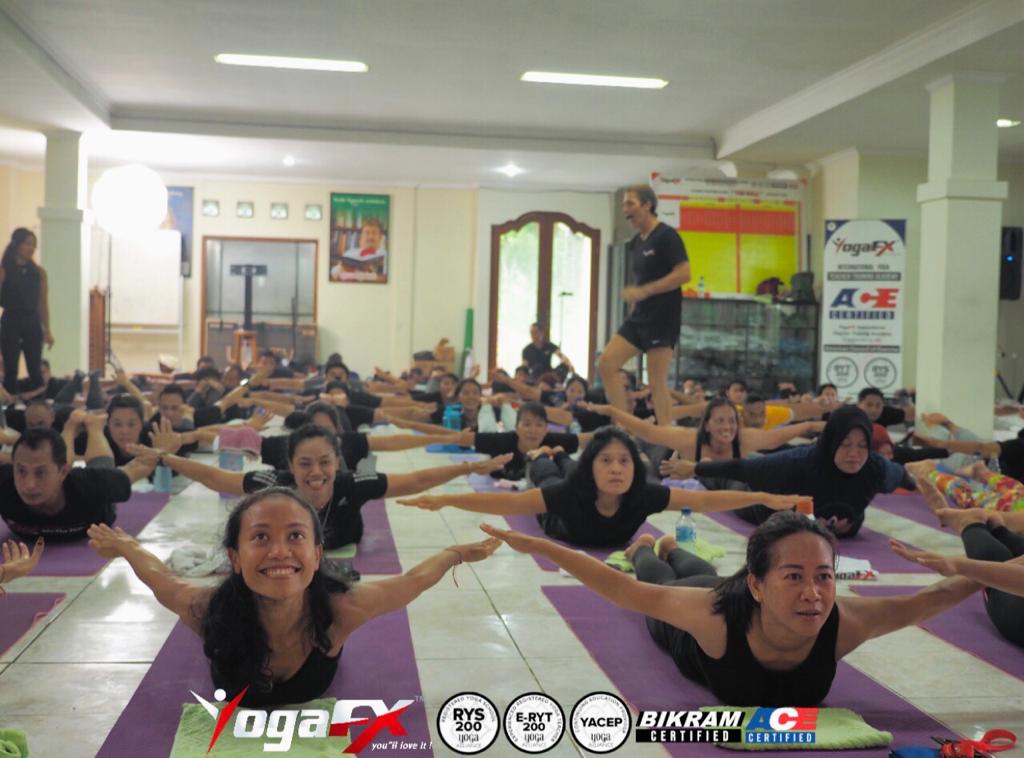
The Benefits of Hot Yoga
Hot yoga offers a multitude of benefits for both the body and mind.
1. Physical Benefits:
Hot yoga provides a challenging physical workout that promotes strength, flexibility, and balance. The heat allows muscles to warm up quickly, facilitating deeper stretches and increased flexibility. The increased temperature also promotes blood circulation, which can enhance the delivery of oxygen and nutrients to the muscles, aiding in their growth and repair. Regular hot yoga practice can help improve overall cardiovascular health, stamina, and endurance.
2. Mental and Emotional Benefits:
Hot yoga not only benefits the physical body but also provides a space for mental and emotional well-being. The combination of heat and intense physical exertion can create a sense of mental focus and clarity. The heat also helps release endorphins, the body’s natural feel-good hormones, which can elevate mood and reduce stress and anxiety. The meditative aspect of hot yoga allows practitioners to cultivate mindfulness, inner calm, and a sense of overall relaxation.
3. Detoxification:
Sweating is a natural way for the body to release toxins, and the heated environment of hot yoga intensifies this process. The profuse sweating experienced during hot yoga helps flush out impurities from the body, promoting detoxification and purification. This can leave practitioners feeling rejuvenated and energized.
Precautions and Considerations for Yoga Practice
While hotyoga offers numerous benefits, it’s important to approach the practice with caution and consider individual needs and limitations. Here are some key considerations:
1. Hydration:
Staying properly hydrated before, during, and after a yoga class is crucial to maintain balance and prevent dehydration. It’s recommended to drink plenty of water before and after class and consider bringing a water bottle to sip on during the practice.
2. Gradual Acclimatization:
If you’re new to yoga, it’s important to acclimate gradually to the heat. Start with shorter sessions and lower temperatures, allowing your body to adjust over time. Pay attention to your body’s signals and take breaks as needed.
3. Health Conditions:
Individuals with certain health conditions, such as heart conditions, high blood pressure, or pregnancy, should consult their healthcare providers before practising yoga. It’s important to ensure that yoga is safe and appropriate for your specific circumstances.
Making the Most of Your Hot Yoga Experience
To maximize your yoga experience, consider the following tips:
1. Arrive Well-Hydrated and Nourished:
Before attending a yoga class, make sure you are well-hydrated and have eaten a light and nourishing meal. This will help sustain your energy levels during the practice.
2. Pace Yourself and Listen to Your Body:
yoga can be physically demanding, so it’s important to pace yourself and listen to your body’s signals. Take breaks when needed and modify poses to suit your abilities. Remember that the practice is about self-care and self-compassion.
3. Utilize Modifications and Props:
yoga classes often provide options for modifications and the use of props, such as blocks and straps. These tools can assist in achieving proper alignment and make the practice accessible for practitioners of all levels.
4. Embrace the Challenge:
yoga can be intense and challenging, both physically and mentally. Embrace the challenge as an opportunity for growth and self-discovery. Stay present, breathe deeply, and focus on the sensations and experiences unfolding in each moment.
5. Find a Reputable Studio and Certified Instructors:
To ensure a safe and enriching yoga experience, find a reputable studio with certified instructors who prioritize safety, alignment, and the overall well-being of their students. Look for instructors who have completed yoga teacher training, such as the Bikram Hot YogaFX teacher training offered by YogaFX, led by Mr. Ian, who is Yoga Alliance certified.
Conclusion
Hot yoga, with its roots in Bikram Choudhury’s teachings, has evolved into a popular practice worldwide, offering physical, mental, and emotional benefits. Whether you choose to practice Bikram yoga, hot vinyasa yoga, or another variation of yoga, the heat and intensity of the practice can bring about profound transformation and growth. It provides an opportunity to build strength, flexibility, and mental resilience while cultivating mindfulness and inner calm.
If you’re interested in exploring yoga further, consider the Bikram Hot YogaFX teacher training offered by YogaFX, led by Mr. Ian. This Yoga Alliance-certified program provides a comprehensive and authentic training experience in Bikram Hot YogaFX. By immersing yourself in the world of yoga, you have the potential to deepen your practice, expand your knowledge, and even embark on a journey of becoming a yoga instructor yourself. Step onto your mat, embrace the heat, and allow the practice of yoga to guide you towards a healthier
, more balanced, and transformative path.






